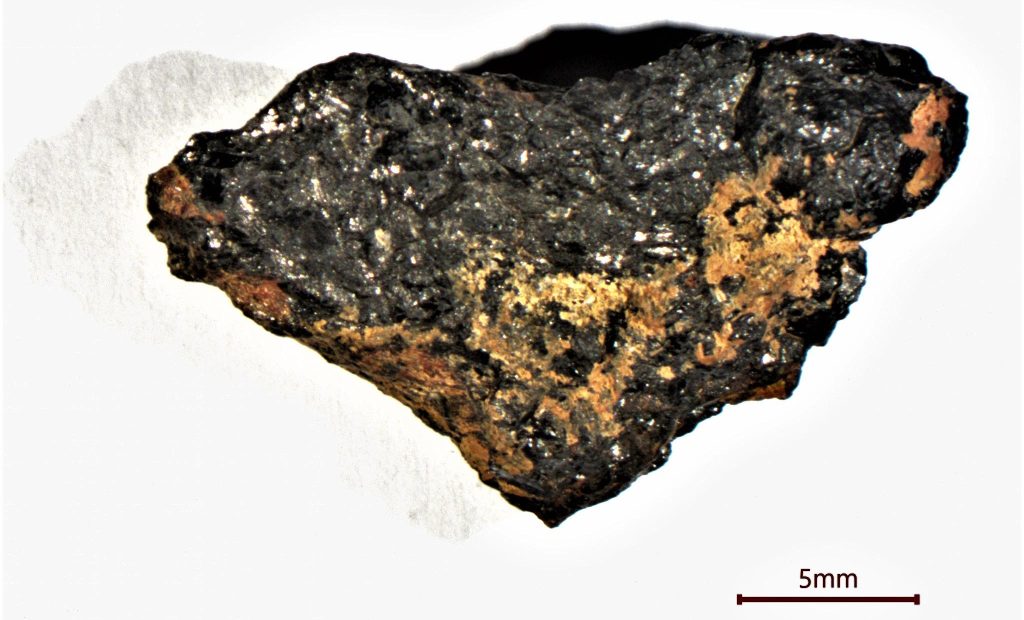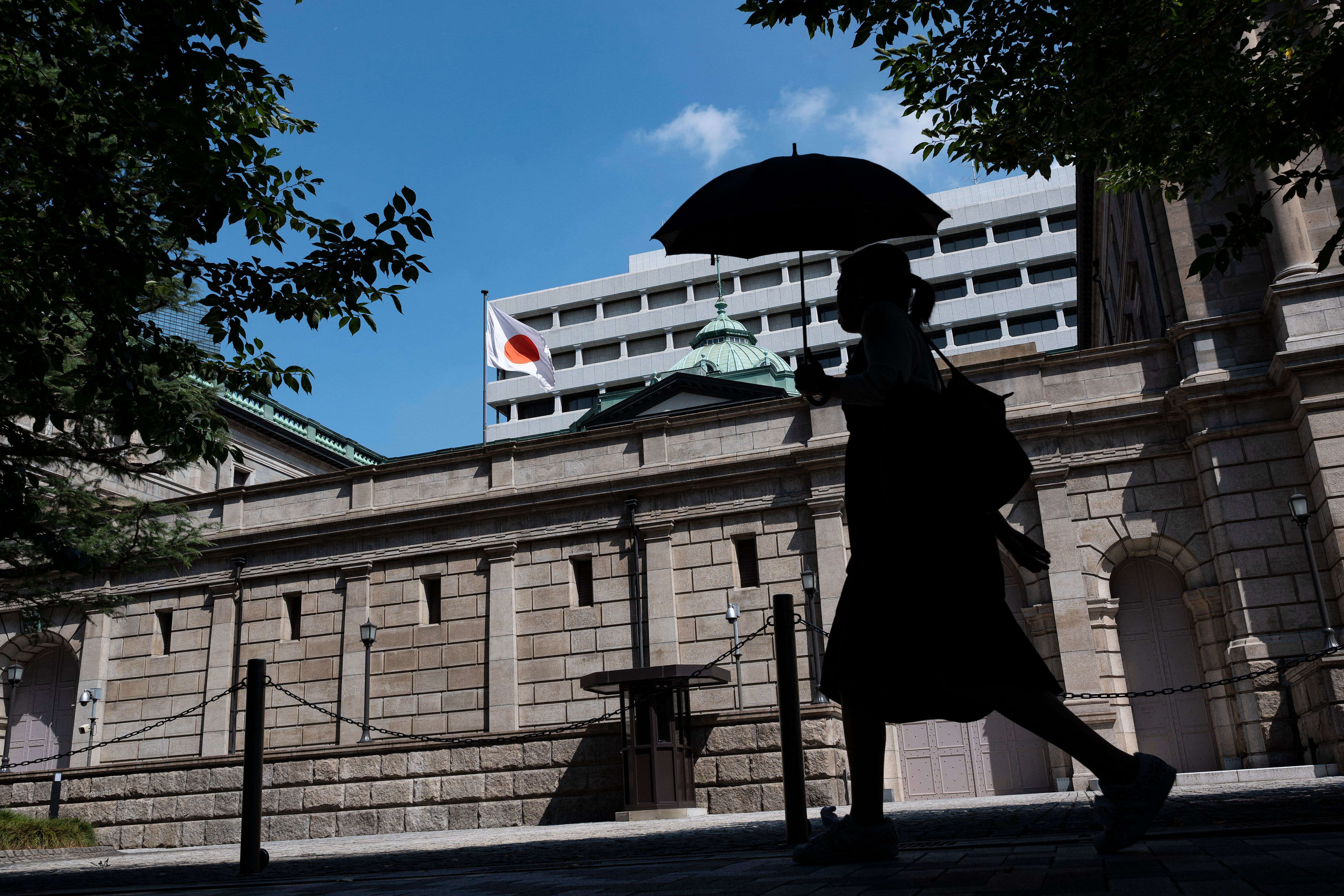
3 gramlık (0,1 ons) bir Hypatia taşı örneği. Araştırmacılar, Hypatia taşında tutarlı bir 15 element deseni buldular. Bu model, güneş sistemimizdeki veya güneş komşumuz olan Samanyolu’ndaki herhangi bir şeyden çok farklıdır. Kredi bilgileri: Romano Serra
Yeni kimyasal “adli tıp”, Mısır çölünden Hypatia adlı bir taşın, Tip Ia süpernova patlamasının Dünya’da bulunan ilk fiziksel kanıtı olabileceğini öne sürüyor. Nadir süpernovalar, evrendeki en enerjik olaylar arasındadır.
Jan Kramer, George Pelianin ve Hartmut Winkler tarafından yapılan yeni bir araştırma çalışmasının sonucu budur.[{” attribute=””>University of Johannesburg, and others that has been published in the journal Icarus.
Since 2013, Belyanin and Kramers have discovered a series of highly unusual chemistry clues in a small fragment of the Hypatia Stone.
In the new research, they meticulously eliminate ‘cosmic suspects’ for the origin of the stone in a painstaking process. They have pieced together a timeline stretching back to the early stages of the formation of Earth, our Sun, and the other planets in our solar system.
A cosmic timeline
Their hypothesis about Hypatia’s origin starts with a star: A red giant star collapsed into a white dwarf star. The collapse would have happened inside a gigantic dust cloud, also called a nebula.
That white dwarf found itself in a binary system with a second star. The white dwarf star eventually ‘ate’ the other star. At some point, the ‘hungry’ white dwarf exploded as a supernova type Ia inside the dust cloud.
After cooling, the gas atoms which remained of the supernova Ia started sticking to the particles of the dust cloud.

The tiny samples of the extraterrestrial Hypatia stone next to a small coin. Rare type Ia supernovas are some of the most energetic events in the universe. Researchers found a consistent pattern of 15 elements in the Hypatia stone. The pattern is completely unlike anything in our solar system or our solar neighborhood, the Milky Way. Prof Jan Kramers (University of Johannesburg) is the lead author. Credit: Jan Kramers
“In a sense we could say, we have ‘caught’ a supernova Ia explosion ‘in the act’, because the gas atoms from the explosion were caught in the surrounding dust cloud, which eventually formed Hypatia’s parent body,” says Kramers.
A huge ‘bubble’ of this supernova dust-and-gas-atoms mix never interacted with other dust clouds.
Millions of years would pass, and eventually the ‘bubble’ would slowly become solid, in a ‘cosmic dust bunny’ kind of way. Hypatia’s ‘parent body’ would become a solid rock sometime in the early stages of formation of our solar system.
This process probably happened in a cold, uneventful outer part of our solar system – in the Oort cloud or in the Kuiper belt.
At some point, Hypatia’s parent rock started hurtling towards Earth. The heat of entry into the earth’s atmosphere, combined with the pressure of impact in the Great Sand Sea in southwestern Egypt, created micro-diamonds and shattered the parent rock.
The Hypatia stone picked up in the desert must be one of many fragments of the original impactor.
Hypatia taşı, Tip Ia süpernova patlamasının dünyadaki ilk somut kanıtı olabilir. Tip Ia süpernovalar nadirdir ve evrendeki en enerjik olaylardan bazılarıdır. UJ araştırmacıları, Mısır’da keşfedilen Hypatia taşında 15 elementten oluşan tutarlı bir model buldular. Bu model, güneş sistemimizdeki veya güneş komşumuzdaki herhangi bir şeyden çok farklıdır.[{” attribute=””>Milky Way. But most of the elements match the pattern of supernova type Ia models. Prof Jan Kramers (University of Johannesburg) is the lead author. Credit: Therese van Wyk
“If this hypothesis is correct, the Hypatia stone would be the first tangible evidence on Earth of a supernova type Ia explosion. Perhaps equally important, it shows that an individual anomalous ‘parcel’ of dust from outer space could actually be incorporated in the solar nebula that our solar system was formed from, without being fully mixed in,” says Kramers.
“This goes against the conventional view that dust which our solar system was formed from, was thoroughly mixed.”
Three million volts for a tiny sample
To piece together the timeline of how Hypatia may have formed, the researchers used several techniques to analyze the strange stone.
In 2013, a study of the argon isotopes showed the rock was not formed on earth. It had to be extraterrestrial. A 2015 study of noble gases in the fragment indicated that it may not be from any known type of meteorite or comet.

A high-voltage proton beam shows three trace elements in the extraterrestrial Hypatia stone, and their concentrations. Here, we see sulphur, iron and nickel for targets 1 and 2 within region 14 on the sample. Dr Georgy Belyanin (University of Johannesburg) used a 3-million Volt proton beam to analyse the tiny fragment of the stone. Credit: Georgy Belyanin
In 2018 the UJ team published various analyses, which included the discovery of a mineral, nickel phosphide, not previously found in any object in our solar system.
At that stage Hypatia was proving difficult to analyze further. The trace metals Kramers and Belyanin were looking for, couldn’t really be ‘seen in detail’ with the equipment they had. They needed a more powerful instrument that would not destroy the tiny sample.
Kramers started analyzing a dataset that Belyanin had created a few years before.
In 2015, Belyanin had done a series of analyses on a proton beam at the iThemba Labs in Somerset West. At the time, Dr. Wojciech Przybylowicz kept the three-million Volt machine humming along.
In search of a pattern
“Rather than exploring all the incredible anomalies Hypatia presents, we wanted to explore if there is an underlying unity. We wanted to see if there is some kind of consistent chemical pattern in the stone,” says Kramers.
Belyanin carefully selected 17 targets on the tiny sample for analysis. All were chosen to be well away from the earthly minerals that had formed in the cracks of the original rock after its impact in the desert.
“We identified 15 different elements in Hypatia with much greater precision and accuracy, with the proton microprobe. This gave us the chemical ‘ingredients’ we needed, so Jan could start the next process of analyzing all the data,” says Belyanin.

UJ researchers find that most of the elements they analysed in the extraterrestrial Hypatia stone fit the predictions from supernova Ia models well. The high-voltage proton beam data shows that for 9 of the 15 elements, concentrations are close to the predicted values. Prof Jan Kramers (University of Johannesburg) is the lead author. Credit: Jan Kramers
Proton beam also rules out solar system
The first big new clue from the proton beam analyses was the surprisingly low level of silicon in the Hypatia stone targets. The silicon, along with chromium and manganese, were less than 1% to be expected for something formed within our inner solar system.
Further, high iron, high sulfur, high phosphorus, high copper, and high vanadium were conspicuous and anomalous, adds Kramers.
“We found a consistent pattern of trace element abundances that is completely different from anything in the solar system, primitive or evolved. Objects in the asteroid belt and meteors don’t match this either. So next we looked outside the solar system,” says Kramers.
Mısır’daki Hypatia taşının çeşitli analizleri, onun Dünya’da veya güneş sistemimizde oluşmadığını göstermektedir. Yeni bir çalışma, Süpernova Ia patlamasına benzer olağandışı bir kimyasal modeli korumuş olabileceğini gösteriyor. Georgi Pelyanin (Johannesburg Üniversitesi) taşın küçük bir bölümünü analiz etmek için 3 milyon voltluk bir proton ışını kullandı. Kredi bilgileri: Therese Van Wyck
bizim zamanımızdan değil
Kramers daha sonra Hypatia’nın konsantrasyon modelini, Samanyolu’nun güneş kolumuzdaki yıldızlararası tozda görmeyi beklediğimizle karşılaştırdı.
Kramers, “Samanyolu’nun kolundaki ara yıldızlararası tozdan elde ettiğimiz desenin Hypatia’da gördüğümüze uyup uymadığına baktık. Yine, kesinlikle hiçbir benzerlik yoktu” diye ekliyor.
Bu noktada, proton ışını verileri, Hypatia’nın nerede olabileceğine dair dört “şüpheyi” de dışladı.
Hypatia Dünya’da oluşmadı, bilinen herhangi bir kuyruklu yıldız veya göktaşı türünün parçası değildi ve iç Güneş Sisteminin ortalama tozundan, ortalama yıldızlararası tozdan da oluşmadı.
kırmızı dev değil
Hypatia’nın element konsantrasyon modeli için bir sonraki olası en basit açıklama, kırmızı bir dev yıldız olacaktır. Kırmızı dev yıldızlar evrende yaygındır.
Ancak proton ışını verileri, kırmızı dev bir yıldızdan gelen kütle akışını da dışladı: Hypatia’da çok fazla demir, çok az silikon ve demirden daha ağır ağır elementlerin çok düşük konsantrasyonları vardı.
Tip 2 süpernova yok
Dikkate alınması gereken bir sonraki “şüpheli”, bir tip II süpernovaydı. Tip II süpernovalar çok fazla demir pişirir. Ayrıca nispeten yaygın bir süpernova türüdür.
Hypatia’nın proton ışını verileri, bir kez daha, en umut verici “adli kimyasal” şüpheliyi dışladı. Bir Tip II süpernovanın, çakıldaki nikel fosfit gibi egzotik minerallerin bir kaynağı olması pek olası değildir. Ayrıca Hypatia’da silikon ve kalsiyuma kıyasla çok daha fazla demir vardı.
Evrenin en dramatik patlamalarından birinin tahmin edilen kimyasını incelemenin zamanı geldi.
ağır metal fabrikası
Daha nadir bir süpernova türü de çok fazla demir üretir. Tip Ia süpernovaları, her yüzyılda galaksi başına yalnızca bir veya iki kez meydana gelir. Ama evrendeki en fazla demiri (Fe) yaparlar. Dünyadaki çeliğin çoğu, bir zamanlar Ia süpernova tarafından yaratılan demir elementiydi.
Ayrıca, yerleşik bilim, bazı Ia süpernovalarının “adli kimya” hakkında çok belirgin ipuçları bıraktığını söylüyor. Bunun nedeni, bazı Ia süpernovalarının hazırlanma şeklidir.
İlk olarak, ömrünün sonunda bir kırmızı dev yıldız çökerek çok yoğun bir beyaz cüce yıldıza dönüşür. Beyaz cüce yıldızlar genellikle çok uzun süreler boyunca inanılmaz derecede kararlıdır ve patlamaları pek olası değildir. Ancak bunun istisnaları vardır.
Beyaz cüce bir yıldız, ikili bir sistemde başka bir yıldızdan maddeyi “çekmeye” başlayabilir. Beyaz cüce yıldızın yoldaş yıldızını “yuttuğu” söylenebilir. Sonunda, beyaz cüce o kadar ağır, sıcak ve kararsız hale gelir ki, bir süpernova la’ya patlar.
Bir süpernova Ia patlaması sırasındaki nükleer füzyon, kabul edilen bilimsel teorik modellerin öngördüğü gibi, oldukça sıra dışı element konsantrasyonu modelleri oluşturmalıdır.
Ayrıca, bir süpernova Ia’da patlayan beyaz cüce yıldız, sadece küçük parçalara ayrılmakla kalmaz, kelimenin tam anlamıyla atomlara da patlar. Supernova Ia malzemesi uzaya gaz atomları şeklinde iletilir.
Yıldız verilerinin ve model sonuçlarının kapsamlı bir araştırmasında ekip, belirli bir süpernova Ia modelinden Hypatia taşına benzer veya en uygun kimyasalı belirleyemedi.
Adli kanıt unsurları
Kramers, “Tüm süpernova Ia verileri ve teorik modeller, silikondan çok daha yüksek oranlarda demir ve süpernova 2 modellerinden kalsiyum oranı gösteriyor” diyor.
“Bu açıdan, Hypatia Proton Işın Laboratuvarı’ndan elde edilen veriler, Ia süpernovasının verileri ve modelleri ile tutarlıdır.”
Toplamda, analiz edilen 15 maddeden sekizi, demir için beklenen oran aralıklarına karşılık gelmektedir. Bunlar silisyum, kükürt, kalsiyum, titanyum, vanadyum, krom, manganez, demir ve nikel elementleridir.
Ancak Hypatia’da incelenen on beş maddenin tamamı beklentileri karşılamamaktadır. 15 elementin altısında oranlar, Tip 1A süpernova için teorik modellerin öngördüğü aralıklardan 10 ila 100 kat daha yüksekti. Bunlar alüminyum, fosfor, klor, potasyum, bakır ve çinko elementleridir.
Kramers, “Bir beyaz cüce yıldız, ölmekte olan bir kırmızı devden oluştuğu için, Hypatia, altı element için bu element oranlarını bir kırmızı dev yıldızdan miras aldı. Bu fenomen, diğer araştırmalarda beyaz cüce yıldızlarda gözlemlendi,” diye ekliyor.
Bu hipotez doğruysa, Hypatia taşı, evrendeki en enerjik olaylardan biri olan Tip Ia süpernova patlamasının Dünya üzerindeki ilk somut kanıtı olacaktır.
Hypatia taşı, güneş sistemimizin erken oluşumu sırasında başlayan ve yıllar sonra diğer çakıl taşlarıyla dolu uzak bir çölde bulunan kozmik bir hikayenin kanıtı olacaktır.
Kaynak: “Dünya Dışı Karbonifer Taş Kimyası” Hypatia: Yıldızlararası Uzayda Toz Heterojenitesine Bir Bakış”, Jan D. Kramers, Georgy A. İkarus.
DOI: 10.1016 / j.icarus.2022.115043

“Analist. Tutkulu zombi gurusu. Twitter uygulayıcısı. İnternet fanatiği. Dost pastırma hayranı.”




More Stories
Cambridge bilim adamları yaşamın yapı taşlarının kökenleri hakkında yeni bir teoriyi ortaya koyuyor
Yeni uydu görüntülerinde Mars'taki gizemli bir 'İnka şehrinde' yüzlerce siyah 'örümcek' tespit edildi.
Uzay çöpü bir eve ulaştığında onarım masraflarını kim ödüyor?